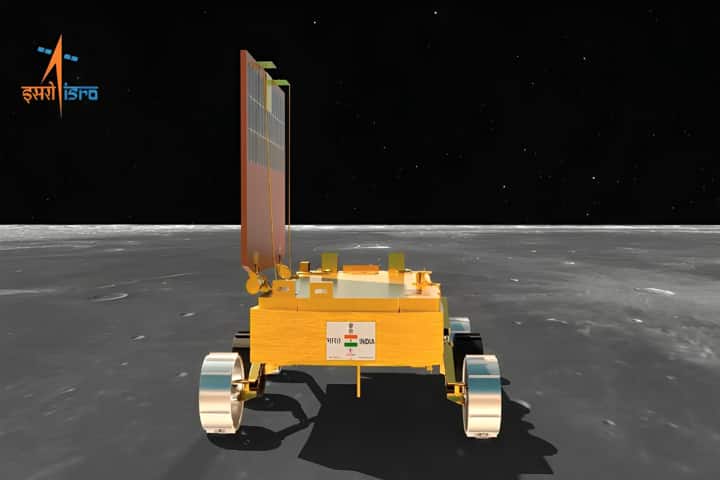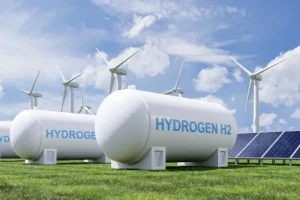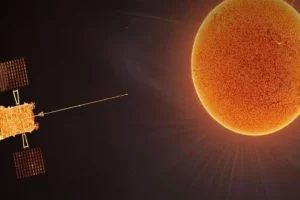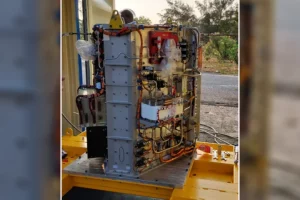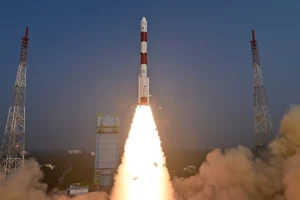Carrying several experiments during its lunar Mission, India’s Chandrayaan-3 has been making some startling discoveries on the surface of the moon like the presence of sulphur. The rover, Pragyan, has found several elements near the South Pole of the moon, where Vikram, the lander landed.
Besides finding sulphur in the south polar region It has also detected the presence of calcium, aluminium, chromium, iron, silicon, titanium, chromium, and oxygen. These findings were confirmed by the Indian Space Research Organisation, marking a major milestone in the Chandrayaan programme. These discoveries were made by the Laser-Induced Breakdown Spectroscopy instrument onboard the rover. Further measurements also revealed the presence of manganese, silicon, and oxygen.
Through LIBS technique the composition of materials is analysed by exposing them to intense laser pulses, generating a localised plasma. From this plasma light is emitted which is then spectrally resolved and detected, revealing the presence of various elements.
The spotting of sulphur is particularly important as it is a relatively rare element on the Moon and its existence in the south polar region suggests presence of water ice, a crucial factor for future lunar missions and potential human habitation.
Apart from this as sulphur generally originates from volcanic activities, its presence can provide vital insights about the satellite’s history and composition.
The presence of other elements was already known but the confirmation through Chandrayaan-3 adds to our existing knowledge about the lunar surface. These elements provide clues about the Moon’s geological history and potential resources for future lunar missions.
ISRO is now conducting an investigation regarding the presence of hydrogen. Presence of this element will be vital given the worldwide interest in it as a clean energy source. Hydrogen is also used for oil refining and chemical production, and its detection on the Moon could open up new possibilities for energy production in space.
The Chandrayaan-3 mission was launched nearly six weeks ago and its main objective is to gather information about the presence and abundance of different elements on the Moon, contributing to our understanding of the lunar environment and paving the way for future explorations.






